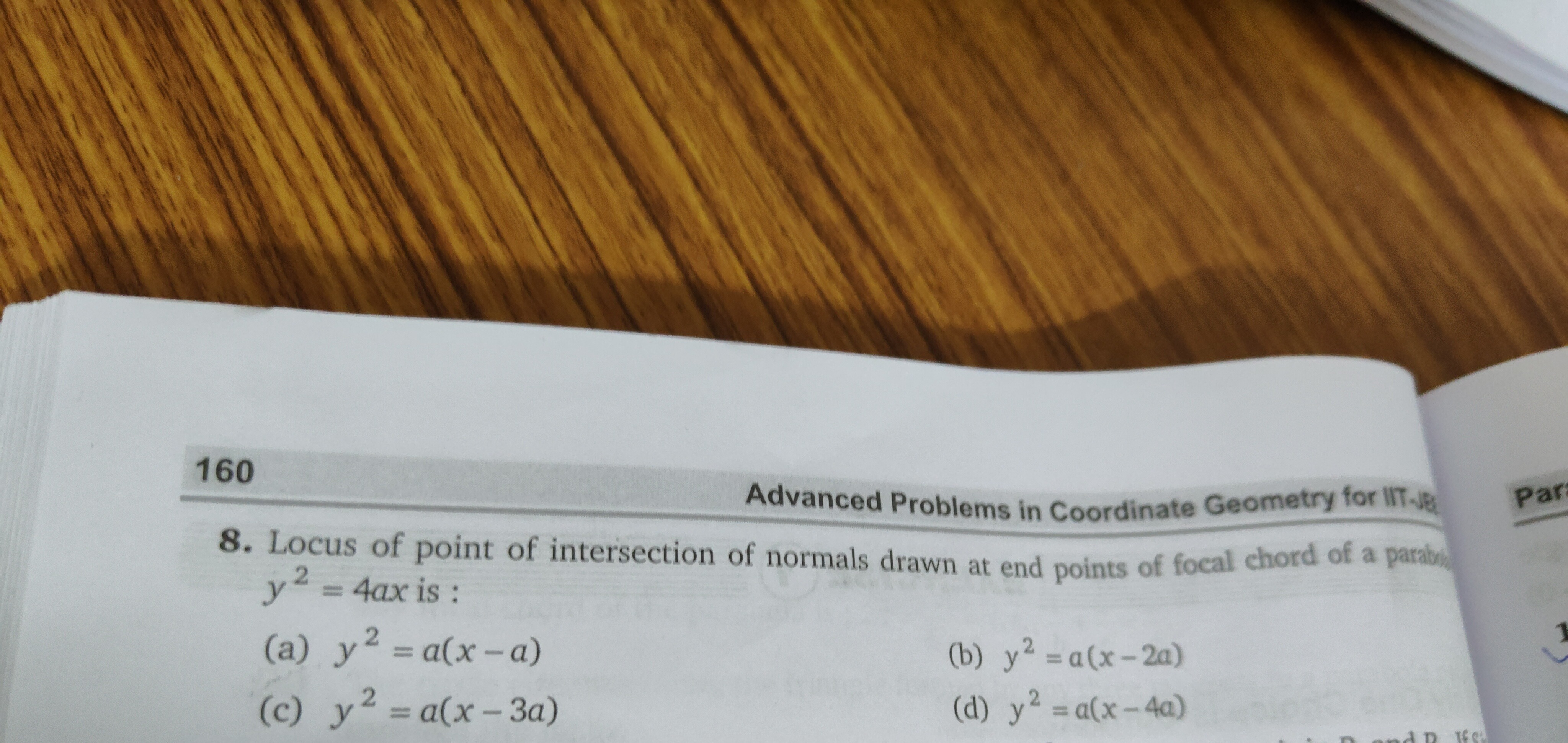Question
Question: Locus of point of intersection of normals drawn at end points of focal chord of a parabola $y^2 = 4a...
Locus of point of intersection of normals drawn at end points of focal chord of a parabola y2=4ax is :

y^2 = a(x-a)
y^2 = a(x-2a)
y^2 = a(x-3a)
y^2 = a(x-4a)
y^2 = a(x-3a)
Solution
The equation of the normal to the parabola y2=4ax at a point (at2,2at) is y=−tx+2at+at3. Let the normals at the endpoints of a focal chord, with parameters t1 and t2, intersect at (h,k). Then t1 and t2 are roots of the cubic equation at3+(2a−h)t+k=0. For a focal chord, t1t2=−1. Let the third root be t3. From Vieta's formulas, t1+t2+t3=0, t1t2+t2t3+t3t1=a2a−h, and t1t2t3=−ak. Substituting t1t2=−1, we get −t3=−ak, so t3=ak. Also, −1+t3(t1+t2)=a2a−h. Since t1+t2=−t3, we have −1−t32=a2a−h. Substituting t3=ak gives −1−(ak)2=a2a−h. Multiplying by a, we get −a−ak2=2a−h, which simplifies to h=3a+ak2, or k2=a(h−3a). Thus, the locus is y2=a(x−3a).
